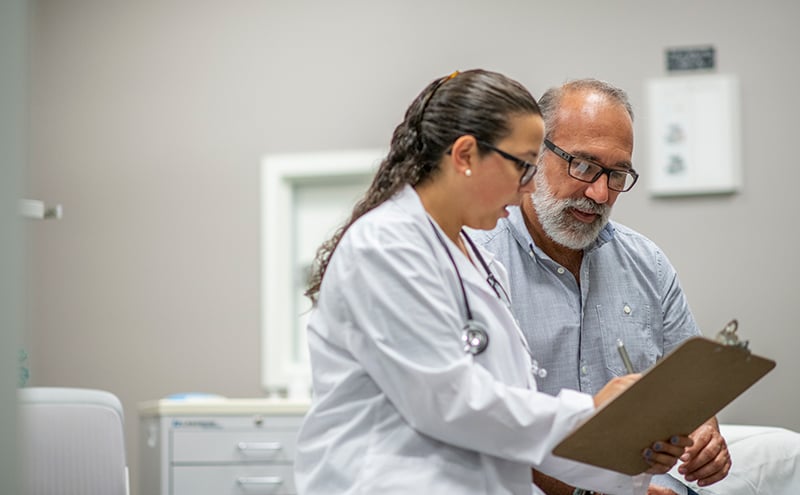
What’s New in the World - EM Admin Research Update
Once again, the recent ACEP Scientific Assembly’s Research Forum contained a treasure trove of administrative and practice management abstracts. Sure, an abstract in only a half a page, but reading all of the abstracts from the 2018 Scientific Assembly will take some time … sooo, here is a series of one-liners (okay, mostly one-liners) to keep you up to date. You can also download the October 2018 supplement to Annals for the full version!
The super-concise summaries are listed in the order they are published, and to ease your referencing the full abstracts in Annals, the same abstract numbering scheme is used:
- Got renal colic? A combo of IV Lido and ketorolac reduced pain better than either alone! (1)
- Out-of-hospital agitation? Ketamine showed a shorter time to adequate sedation over midazolam. (2)
- Do you know MCG-CF? A resting 90-second Magnetocardiography using Cardioflux used in an ED Obs unit showed promising specificity and NPV (87.1% & 94.2%, respectively for 70% or greater stenosis versus stress testing and/or coronary angiography. (3)
- High Sensitivity Troponins may lead to a higher discharge percentage! Moving to the 5th gen hsTnT 58.7% of patients with chest pain or tightness were discharged vs. 45.2% for the year prior (using the 4th gen test). (4)
- Machine learning can help…A machine learning model predicting LOS shows promise and identifies predictors for ED load. (16)
- Do different patients go to free-standing vs. hospital-based EDs? Yes! ED LOS, acuity levels, racial distribution, insurance status, arrival method, and dispositions all varied between the two. (17)
- Does an APP-led critical-care step-down unit help? It helped improve ED throughput and increased revenue from a decrease in ED LOS and greater CPT critical care billing. (18)
- Does a malpractice claim change practice patterns? Not in this study of +6M visits with ~1,000 physicians…no change in global practice patterns, admission rate, RVUs/visit, RVUs/hr, discharge LOS, and patient experience; however, failure to diagnose claimants showed improved future patient experience ratings. (19)
- Do males or female ED physicians admit more? For these 110,230 patients, no statistical difference was found in admission rates based on the doc’s gender…other factors were statistically significant (LOS, acuity, years in practice) but the significances may be interrelated. (20)
- So, you say you board patients? The concept of a Full Capacity Protocol is presented, the core components described, and benefits/barriers discussed...certainly a potential tool in the armamentarium against ED boarding. (21)
- Obs unit staffing…MD vs PA: transitioning from an MD 24/7 staffed Obs unit to PA 24/7 and MD 3/day staffing model showed a transiently lower acceptance rate that later normalized, no significant difference in E/M coding and billing charges, and statistically longer LOS (1,702 minutes pre-model change and 1,771 1-year post-model change). (22)
- Pull-till-full showed a “profound positive impact on door-to-doc [23 to 11 min], door-to-discharge [159 to 141 min], and LWBS rate [0.913% to 0.426%] without requiring any added resources.” (23)
- Do docs-in-triage order more CTs? Not in this study where two cohorts of 900 patients with abdominal pain were examined. CT ordering rates by the triage physician were lower than rates by physicians in the main ED [32.8% vs 45.1%]—with equivalent yield [52.9% vs 50.5%]. (59)
- Treating at home brings savings: This study of 70 patients enrolled in the Acute Care at Home (ACH) program showed average costs of care of $3,360 for ACH patients vs inpatient care of $15,929 for cellulitis and $15,262 for pneumonia (the two most common conditions treated). These lower fees included ED facility charges, professional fees, and home health care. (60)
- Is patient satisfaction constant over different surveying methods? This study says no…onsite tablet surveys compared to Press Ganey surveys showed the onsite tablet surveys (with the exception of “Would you recommend this ED?”) returned 10.75% - 39.25% higher mean patient satisfaction scores across all questions. (61)
- Front-end process improvements/investments pay off…this rural critical access hospital ED (10-11,000 annual visits) began direct-to-room and added a bedside registrar. The reduction of LWBS of 3.4% to 0.1% led to a “significant financial ROI as well as more timely and likely better care.” (62)
- Does the doc in triage order more? This study employed an index test method (identified index tests within categories of physician orders rather than an absolute test count) and found that upfront physicians were 1.75 times more likely to have an index test of any sort ordered (1.44 tests upfront vs 0.78 when not seen upfront). (63)
- Can the admission ball start rolling from triage? An admission predictor tool identified 24 high-risk potential admissions from triage (21 were admitted), but the complexity of awaiting diagnostic test results required to assign primary vs. sub-specialty care at this academic institution precluded the initiation of the expedited process. Such a tool may be applicable in settings with fewer inpatient teams. (64)
- Does the doc’s patient sat take a hit with hallway patients? This retrospective cohort study found that while “how likely would you recommend” was significantly lower for hallway patients, there was no statistically significant difference noted in overall provider rating. (65)
References: All from Annals of Emergency Medicine, Volume 72(4s), October 2018
- A Randomized Trial Comparing the Combination of Intravenous Lidocaine and Ketorolac to Either Analgesics Alone for Emergency Department Patients with Acute Renal Colic. Drapkin J, Maimonides Medical Center, Brooklyn, NY.
- Ketamine Versus Midazolam for Prehospital Agitation: A Prospective Study. Cole JB, Hennepin County Medical Center, Minneapolis, MN.
- Magnetocardiography Using a Novel Analysis System (Cardioflux) in the Evaluation of Emergency Department Observation Unit Chest Pain Patients. Pena M, St. John Hospital and Medical Center, Wayne State University, Detroit, MI.
- Impact of High Sensitivity Troponins on Discharge Rates of Patients Presenting to the Emergency Department with Chest Pain. Randolph FT, Thomas Jefferson University, Devon, PA.
- Forecasting Medical Patient Length of Stay at Presentation in an Emergency Department Using Machine Learning. TSAI M, Far Eastern Memorial Hospital, New Taipei City, Taiwan.
- Patient Characteristics of Patients Presenting to a Large Health Care System’s Freestanding and Hospital Emergency Departments. Simon EL, Cleveland Clinic Akron General, Akron, OH.
- Impact on Emergency Department Length of Stay and Current Procedural Technology Critical Care Billing of an Advanced Practice Provider-Led Emergency Department Critical Care Step-Down Unit. Merchant RC, Brigham and Women’s Hospital, Boston, MA.
- Emergency Physician Practice Change in Response to Being Named in a Malpractice Claim. Carlson JN, St Vincent Hospital, Erie, PA.
- Comparison of Admission Rates Among Patients Treated by Male and Female Emergency Physicians. Valiuddin H, Saint Mary Mercy Hospital, Livonia, MI.
- Determinants of Full Capacity Protocol Implementation: A Qualitative Study. Alishahi Tabriz A, University of North Carolina, Chapel Hill, NC.
- The Implications of Transitioning to Primary Physician Assistant Staffing in a Clinical Decision Unit. Gupta S, Long Island Jewish Medical Center, New Hyde Park, NY.
- Impact of Implementing a Direct Bedding Process on Emergency Department Throughput and Leaving Without Being Seen Rates. Porter JA, Florida Hospital East Orlando, Orlando, FL.
- Comparing CT Utilization Between Traditional Care and Physician in Triage Models Among Patients with Abdominal Pain. Johnson J, University of Wisconsin, Madison, WI.
- Insurance Coverage and Cost of Patients Enrolled in an Acute Care at Home Pilot Project for Emergency Department Patients. Kreshak AA, University of California, San Diego, San Diego, CA.
- Close the Loop: A Novel and Potentially More Valid Method of Measuring Patient Satisfaction in the Emergency Department. Gibson CB, University of Alabama at Birmingham, Birmingham, AL.
- Patient Flow Improvements in a Rural Critical Access Hospital Reduces the Number of Patients Who Leave Without Being Seen. Thesing J, Cuyuna Regional Medical Center, Crosby, MN.
- The Impact of a Concierge Medicine Model in the Emergency Department on Diagnostic Test Utilization. Bove T, New York Presbyterian Brooklyn Methodist Hospital, Brooklyn, NY.
- Trial of a Novel Approach for Identification and Processing of Admissions from the Emergency Department. Linthicum BO, University of North Carolina at Chapel Hill, Chapel Hill, NC.
- Provider Patient Satisfaction Scores Unaffected by Hallway Patients in the Emergency Department. Gopalsami A, Cedars-Sinai, Los Angeles, CA.
Tom Spiegel, MD, MBA, MS, FACEP



